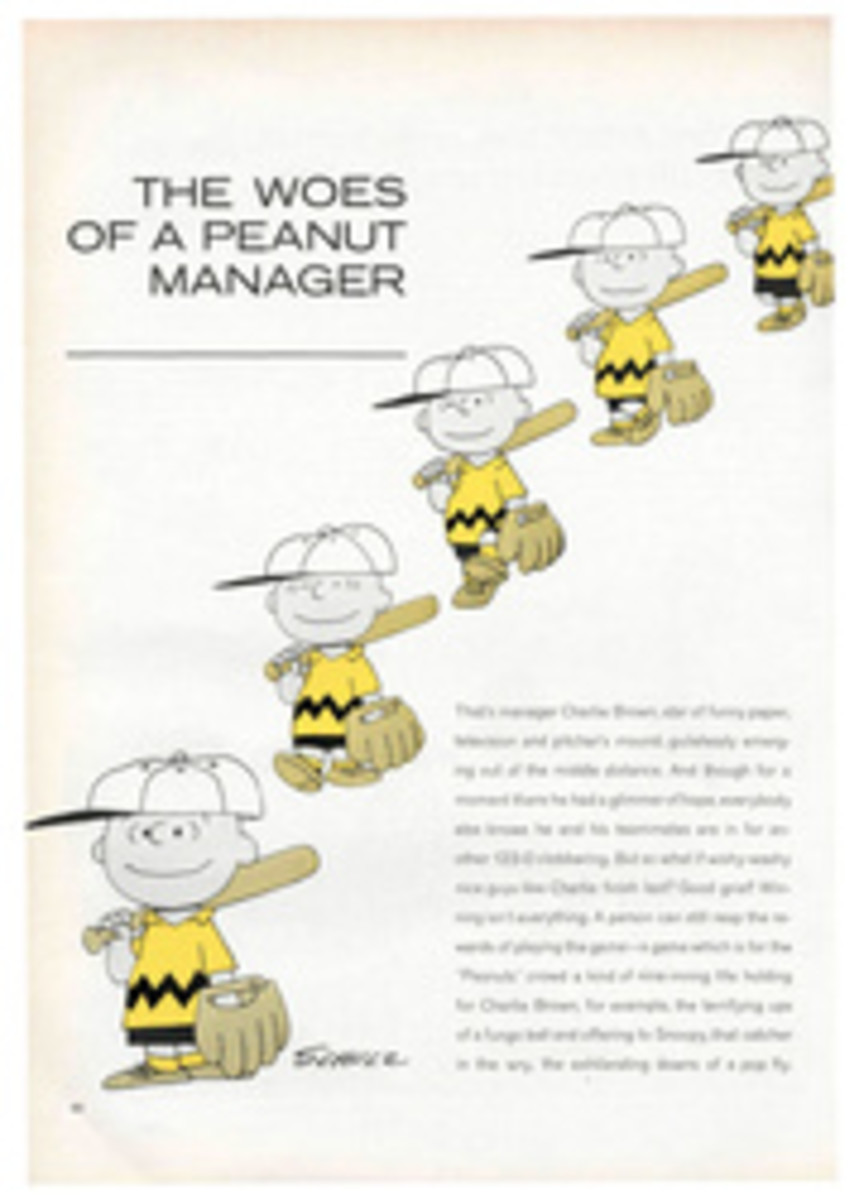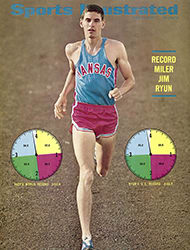
An artificial thaw for big-league baseball
Although I have been a baseball fan for more than 20 years, missing, I think, nothing of significance from Little League to big league during this time, the memory that remains the strongest and the fondest is of an event that took place back near the very beginning of my fandom, and, strangely enough, it took place after the baseball season was over.
It was the late '40s in Grand Falls, N.B. The season had been a good one; for the first time since the war we had a home-town team. It was entirely comprised of returned veterans, and the citizenry, including my fellow 11-year-olds and me, had responded by turning out for their Sunday games in numbers that seemed to exceed the population. We had, in fact, become a baseball-mad community.
But now it was early October, and in northern New Brunswick that means the end of the baseball season, because the air carries a palpable chill and snow may be as close as the next cloud. So the team had retired for the year and, our area being without football, the rest of us had settled in for a winter of hockey and vicarious baseball.
Then suddenly a rumor that had been circulating since mid-September took tangible form. There was a bloom of posters in store windows along the main street announcing in shouting bold print the nearly unbelievable news that Birdie Tebbetts' major league All-Stars were coming to play an exhibition.
Now, if you grew up in a small town, were nuts on baseball and at age 11 had not seen even one professional ballplayer in person, much less an entire team, you will have to agree that here was the singular event of our lives. The signs had listed some of the players coming—George (Snuffy) Stirnweiss, Joe Coleman, Eddie Pellagrini, Frank Shea, Ray Scarborough, Earl Torgeson, Tony Lupien, Vern Stephens—and after stopping to reread the list at practically every store on the way from school each day we would spend hours envisioning their presence in our ball park. The anticipation was delicious.
It was, however, diluted a little by worry about the weather. Gray-lined snow clouds were overhead each day, and we knew only a drop in temperature would be required to open them up like burst pillows. All we could do was pray.
Our civic pride, meanwhile, was running undeterred, fed by all of us, 11-year-olds to adults. Small-towners are never hard put to find pride in their town anyway, but a visit by big-league ballplayers—well, that was something you could really talk big about. So we constantly bragged to each other, subtly, of course. For example:
"S'pose there'll be lots down from Edmundston for the big game."
"Yeah, I imagine. And I hear four busloads are comin' up from Fredericton."
The implication was clear. The larger towns in the St. John Valley were being bypassed. Our little town, population about 3,000, was a chosen place.
Two days before the scheduled game it snowed.
It was the kind of snow that in the dead of winter makes gleeful children out of skiers, two inches of light fluff that is glorious on the well-based ski slope but bloody hell on the baseball diamond. Our hearts sank.
But then the next day the sun came out, and our hopes shot up again. By nightfall all that remained were a small lake at shortstop and some collections of corn snow along the fences, and surely a couple of hours of sunshine the following morning would take care of that.
And so when the great day dawned an atmosphere of rich festivity pervaded the town. A public half-holiday had been declared. Even the schools were closing at noon so the kids could see the game from benches set up for them in right field.
In my mind the first order of business was to get autographs, and my father drove me to the town's only hotel, where the players were encamped. When we pulled up in front of it, they were on the porch, wisecracking, whistling at girls, trying habitant French and chewing mountainous chunks of tobacco.
Our car was a Canadian make, and it immediately incited curiosity among the American ballplayers. One huge fellow, absolutely the biggest I'd ever seen, came over for a close look. He circled the car and then poked his head in the window on my side to ask a question. And then, on invitation from my father, he got in and sat down to inspect the interior.
I was struck numb, voiceless. My friends would never believe it. A big-league ballplayer was sitting in our car. I wanted to say something to him, anything, for no other reason than to get an answer so that I could brag to my friends. What prestige there would be in telling them not only that a big-league ballplayer sat in our car but also that a big-league ballplayer spoke to me!
But my mind was jellied, and all I could muster was a feeble "'by" when he finally withdrew. Sure that life would never again present an opportunity of such magnitude, I was disgusted with myself and near tears.
In a few moments, though, I shored up my courage sufficiently to go after autographs, and I got them—all, that is, except one. Some of my friends had an additional signature, a ballplayer they weren't sure they had heard of before. But he was a ballplayer—his autograph was right there on their scorecards. And then somebody recognized the name. It belonged not to a ballplayer but to a truck driver who'd seen no reason to deny the autograph-seekers simply because all he knew about baseball was that it was played at Veteran's Field. That was the kind of day it was.
Two hours before the game the sun still had not come out, and Lake Shortstop remained. A narrow trench had been hoed to the outfield grass, but this had only broadened the basin. The problem was growing in gravity.
Then home-town ingenuity leaped into the breach. A pickup truck carrying sawdust appeared, and workers quickly shoveled it onto the sodden area. Next they soaked the area with gasoline and, moving away, one of them tossed a lighted match onto it. A sheet of flame went up, its tip licking 40 feet, and heavy black smoke rolled out. It was a sensational spectacle, the best I had seen since the box of Labor Day fireworks had exploded in the same area a few years earlier. When the fire subsided, the grass back of shortstop was blackened in a 10-foot semicircle. But the water was gone. Play ball.
And play they did. We marveled when Tony Lupien stroked a ball much farther than we had ever seen one hit into right field. We roared when one of our home-town batters swung at a fat pitch and connected with a snowball. We mixed laughter with admiration when another hit sharply to third and the catcher easily outran him to first to take the put-out throw. And we roared again when our best batter came to the plate and the entire infield and outfield lay down.
The next day, at the invitation of town officials, the pros repeated the performance before a crowd as large as the first. And then they were gone.
There was, however, a final reminder of their visit. A few days before Christmas that year a package arrived from the U.S. for Red Ouellette, our home-team bat boy.
Opening it, Red found a big-league catcher's mitt, a gift from Earl Torgeson, who explained that from now on, when 8-year-old Red warmed up the pitcher between innings while the catcher was restrapping his pads, he could do it with his own mitt.
Red, of course, was delighted, but so were all of us. The fact that a big-league player remembered somebody in our town fanned our pride again and kept it burning the rest of the winter.

